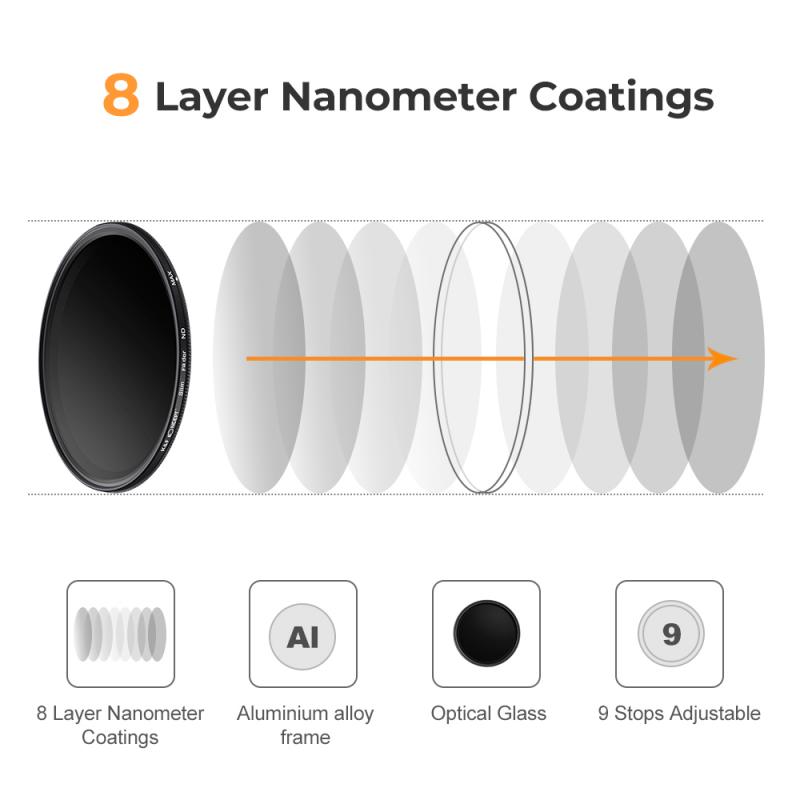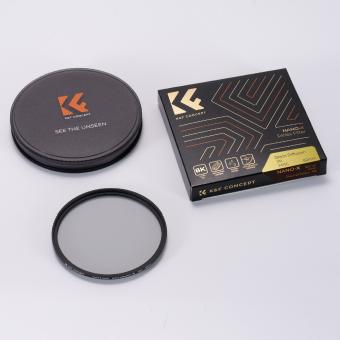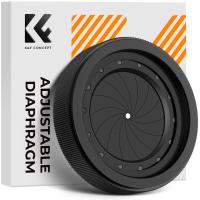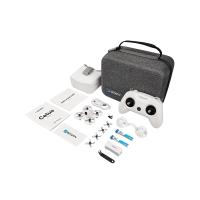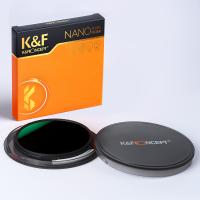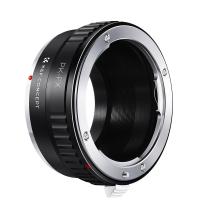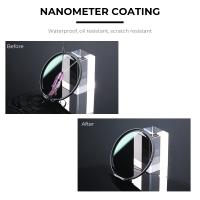How Does A Neutral Density Filter Work ?
A neutral density filter is a type of camera filter that reduces the amount of light entering the lens without affecting the color or hue of the image. It works by evenly attenuating the intensity of all wavelengths of light passing through it. This is achieved by using a material that has a uniform density throughout, which absorbs or scatters the light in a controlled manner. The filter is typically made of glass or resin and is coated with a special film that helps to maintain its neutrality. By reducing the amount of light, a neutral density filter allows photographers to use longer shutter speeds or wider apertures in bright conditions, which can be useful for creative effects such as motion blur or shallow depth of field.
1、 Light absorption: Reducing the intensity of all wavelengths of light.
A neutral density filter is a type of optical filter that is used to reduce the intensity of light without affecting its color or wavelength composition. It achieves this by evenly absorbing all wavelengths of light passing through it.
The filter is made up of a material that has the ability to absorb light, such as glass or plastic, which is coated with a special dye or pigment. This coating is designed to evenly absorb light across the entire visible spectrum, from ultraviolet to infrared. As a result, when light passes through the filter, it is uniformly attenuated, reducing its intensity.
The absorption process occurs as the photons of light interact with the molecules of the dye or pigment. These molecules have specific energy levels that match the energy of the photons at different wavelengths. When a photon interacts with a molecule, it transfers its energy to the molecule, causing it to vibrate or rotate. This energy transfer effectively reduces the intensity of the light.
From a more recent perspective, advancements in technology have led to the development of neutral density filters that utilize more sophisticated materials and coatings. For instance, some filters may incorporate multiple layers of different materials to achieve a more precise and uniform absorption across the entire visible spectrum. Additionally, advancements in nanotechnology have allowed for the creation of filters with nanostructures that can manipulate light at the subwavelength scale, providing even greater control over the intensity of light.
Overall, neutral density filters work by absorbing light across all wavelengths, thereby reducing its intensity without altering its color or wavelength composition. These filters find applications in various fields, such as photography, cinematography, and scientific research, where precise control over light intensity is required.

2、 Optical density: Altering the refractive index to reduce light transmission.
A neutral density (ND) filter is a type of photographic filter that reduces the amount of light entering the camera lens without affecting the color or hue of the image. It is commonly used in situations where there is too much light, such as when shooting in bright sunlight or when using a slow shutter speed to capture motion blur.
The primary mechanism by which a neutral density filter works is by altering the refractive index of the material it is made from. The filter is designed to evenly reduce the intensity of all wavelengths of light passing through it, hence the term "neutral density." This is achieved by incorporating materials with specific optical properties that can effectively absorb or scatter light.
The filter is typically made from a high-quality glass or resin material that has been coated with a thin layer of metallic or dielectric material. This coating helps to control the amount of light that is transmitted through the filter. By adjusting the thickness and composition of the coating, manufacturers can create filters with different levels of light reduction.
When light passes through the filter, the altered refractive index causes the light waves to scatter or absorb, reducing the overall intensity of the light. This allows photographers to use longer exposure times or wider apertures without overexposing the image.
In recent years, advancements in technology have led to the development of variable neutral density filters. These filters allow photographers to adjust the amount of light reduction by rotating the filter, providing greater flexibility in controlling exposure settings.
Overall, neutral density filters are a valuable tool for photographers, enabling them to achieve creative effects and overcome challenging lighting conditions by precisely controlling the amount of light entering the camera lens.
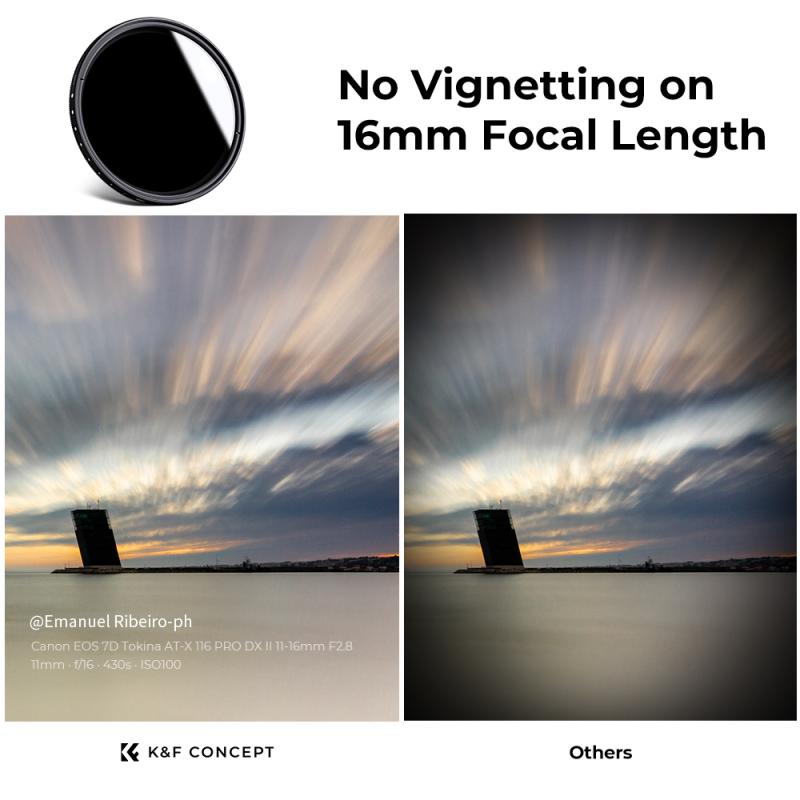
3、 Polarization: Filtering light based on its polarization state.
A neutral density filter is a type of optical filter that reduces the intensity of light without affecting its color or polarization state. It achieves this by uniformly attenuating the light across the entire visible spectrum.
The primary mechanism by which a neutral density filter works is absorption. It contains a material that absorbs a portion of the incident light, thereby reducing its intensity. The filter is designed to have a uniform absorption coefficient across all wavelengths, ensuring that it does not introduce any color cast to the transmitted light.
In terms of polarization, a neutral density filter does not have any specific effect. It does not selectively filter light based on its polarization state, unlike a polarizing filter. Polarizing filters work by allowing only light waves oscillating in a specific direction to pass through, while blocking light waves oscillating in other directions. This property is utilized to reduce glare, enhance contrast, and control the amount of light entering the camera lens.
It is worth noting that advancements in technology have led to the development of variable neutral density filters. These filters allow photographers to adjust the level of light attenuation by rotating the filter, providing greater flexibility in controlling exposure settings. Variable neutral density filters typically consist of two polarizing filters that can be rotated relative to each other, altering the amount of light transmission.
In summary, a neutral density filter reduces the intensity of light across the visible spectrum without affecting its color or polarization state. It achieves this through uniform absorption, unlike polarizing filters that selectively filter light based on its polarization state.

4、 Multilayer coating: Interference effects to attenuate specific wavelengths.
A neutral density filter is a type of optical filter that evenly reduces the intensity of light across the entire visible spectrum without altering its color. It is commonly used in photography and cinematography to control the amount of light entering the camera lens, allowing for longer exposure times or wider apertures in bright conditions.
The primary mechanism by which a neutral density filter works is through a multilayer coating that utilizes interference effects to attenuate specific wavelengths of light. The filter consists of multiple layers of dielectric materials with varying refractive indices. When light passes through these layers, some wavelengths experience constructive interference, while others experience destructive interference. This interference pattern results in the reduction of light intensity without altering its color.
The latest point of view on neutral density filters suggests that advancements in coating technology have led to improved performance and efficiency. Modern filters are designed to provide a more precise and uniform reduction in light transmission, ensuring accurate exposure control. Additionally, the latest coatings aim to minimize unwanted reflections and flare, resulting in enhanced image quality.
It is worth noting that neutral density filters come in different strengths, typically measured in f-stops, which indicate the amount of light reduction they provide. These filters are available in various forms, including screw-on filters for camera lenses and square or rectangular filters for use with filter holders.
In summary, a neutral density filter works by utilizing a multilayer coating that exploits interference effects to evenly reduce the intensity of light across the visible spectrum. The latest advancements in coating technology have further improved the performance and efficiency of these filters, allowing for more precise exposure control and enhanced image quality.
